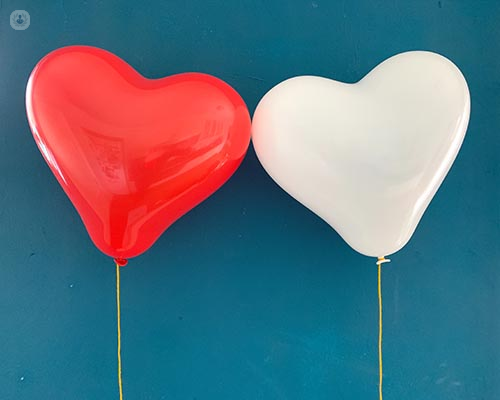Double balloon enteroscopy explained: part 1
Written in association with:Double balloon enteroscopy (DBE) is an advanced endoscopic procedure which is becoming increasingly popular in the UK, with an extremely high success rate. In the first article of a two-part series, revered consultant gastroenterologist Dr Edward John Despott explains how the procedure works and gives a brief insight into its history.

What exactly is a double-balloon enteroscopy?
A small bowel odyssey is a camera-based examination and endoscopy of the small bowel. The small bowel is a very different organ from the stomach and the large bowel, which can be accessed by a gastroscope or colonoscope respectively. This is done by practically every gastroenterologist, but double-balloon endoscopy is a very specialised technique, requiring special instruments, specifically a particular instrument called the double balloon enteroscopy (DBE) and many years of training.
You may question why is the small bowel different. The small bowel is a very long and floppy tube that can be up to eight meters long. As you can imagine, when trying to push an instrument into something that's long and floppy, what happens is that it starts coiling or looping and moving away from you, meaning that operating is difficult.
This was the case until 2001, where, previously the only way to put an endoscope into the bowel was to perform an operation with a huge cut and take out the bowel on the table, on the operating table and make a cut in the bowel and then progressing the instrument through it. This process was extremely invasive with high mortality and high morbidity rates. 2001 saw the birth of capsule endoscopy, a little camera that was initially designed for spying in the military. However, the small camera appeared to be very useful for medicine, therefore a team from Israel and London came together and began working on this capsule, which became very successful.
The endoscopy is something that can be swallowed and it takes pictures that we use all the time as a scout, but it is a scout and it takes pictures like a drone. When we find something within the small bowel that must be treated, a capsule is unable to do it. However, we still regularly use it to scout for pathology, but when we find something, that is where double-balloon enteroscopy comes in.
How does a double balloon enteroscopy work?
A double balloon enteroscopy is a relatively simple but genius idea. A small balloon at the tip of the scope is inflated in order to allow us to have an anchor point, this grips the small bowel.
The analogy is as follows; imagine you have a bucket which has lost its handle and you wish to pick it up. You can grab it, but another way of doing so is to inflate a children's party balloon inside it. If it inflates enough, it can hit the walls and grip them and then we are able to lift the bucket by lifting this inflated balloon.
That is how the scope balloon works; it creates an anchor point in the small ball. Then we advance an overtube and inflate its balloon. We then deflate the scope balloon, pass forward, inflate it again, deflate the overtube balloon and go forward with both balloons inflated, because we've got a decent grip. This is a very gentle grip; it doesn't damage the bowel.
We then pull backwards with both balloons inflated and we plicate or fold the bowel ontp the overtube which is brilliant because we are able to not only advance the scope forward into a very long-winded bowel, but we are also able to shorten the bowel. This means that with a two-metre-long endoscope, we are able to scope the whole of the small bowel if needed.
What can be treated with double-balloon enteroscopy?
What we can do with a double-balloon enteroscopy is treat bleeding lesions without the need for an operation. We can retrieve foreign bodies, for example, a capsule or something else that has been stuck in a small bowel. We can also retrieve a bone or something similar and can even remove polyps. Additionally, the procedure allows us to even stretch strictures and narrowings of the bowel.
A double-balloon enteroscopy can be utilised for Crohn's disease or in cases where there are other strictures caused by drugs. For example, non-steroidal anti-inflammatory drugs can cause this. It allows us to do many things, without the need for surgery within the small bowel. It has revolutionised the way we handle small bowel disease.
Together, capsule and double balloon enteroscopy have avoided the need for huge operations to actually do an enteroscopy / a small bowel endoscopy.
If you would like to book a consultation with Dr Despott simply visit his Top Doctors profile today.


